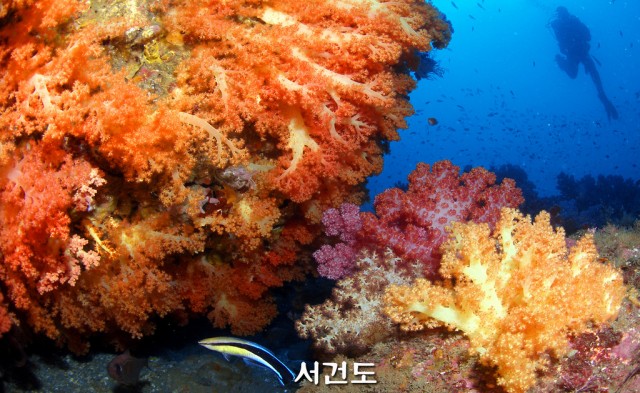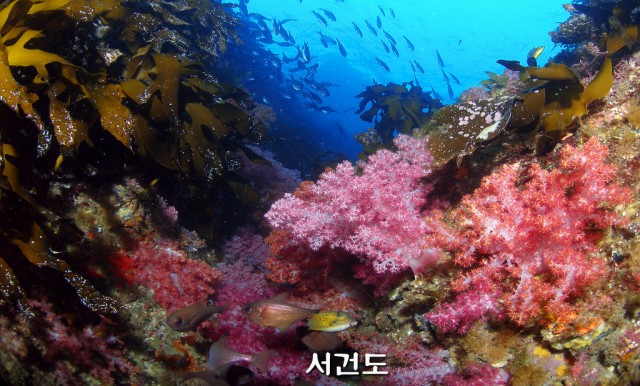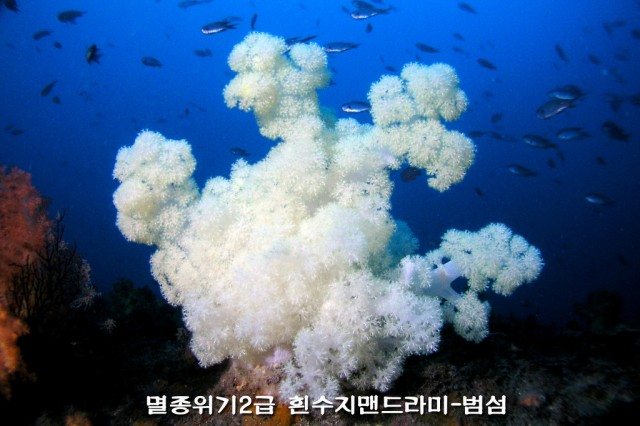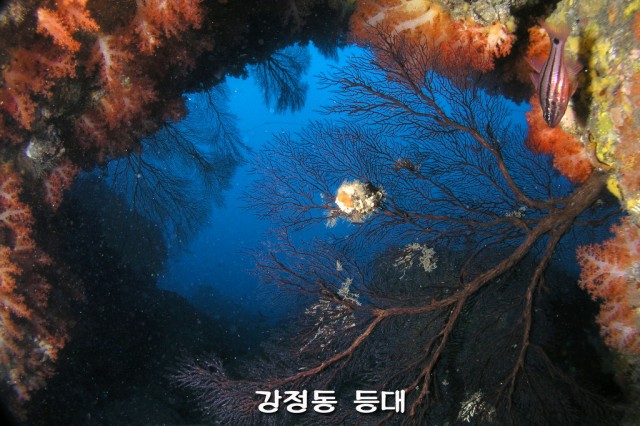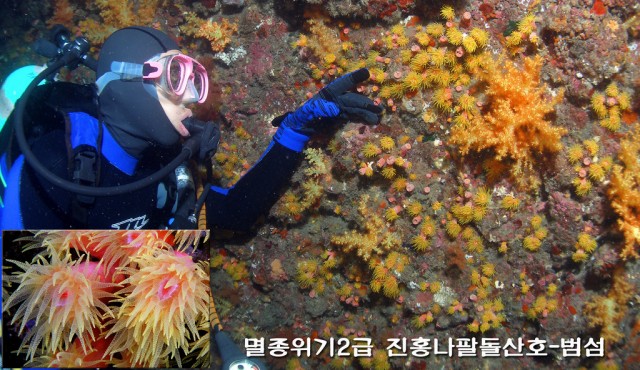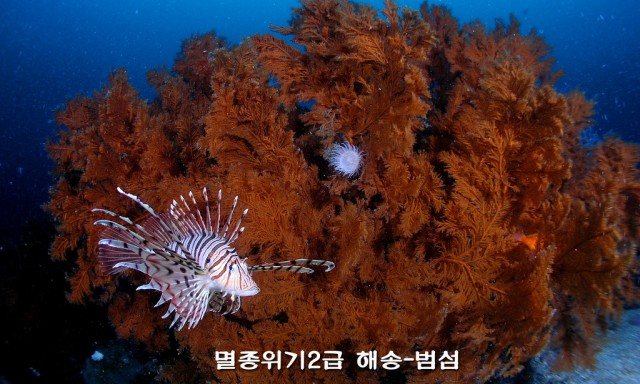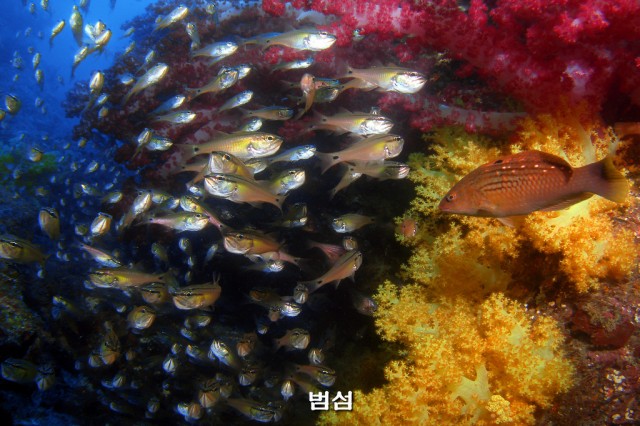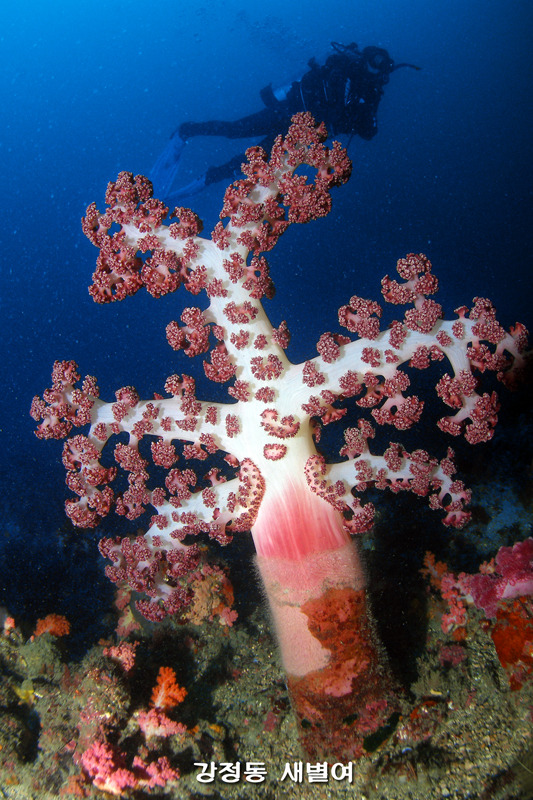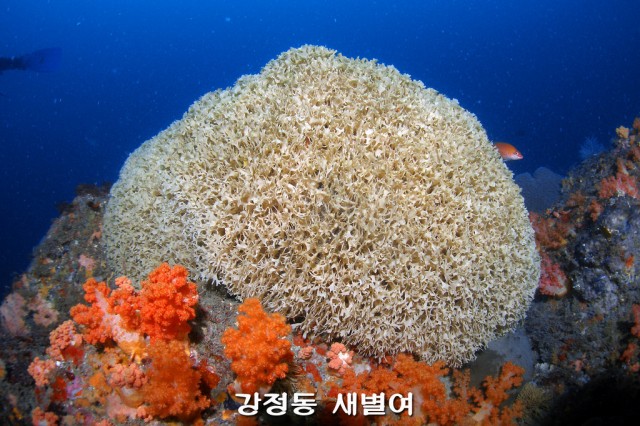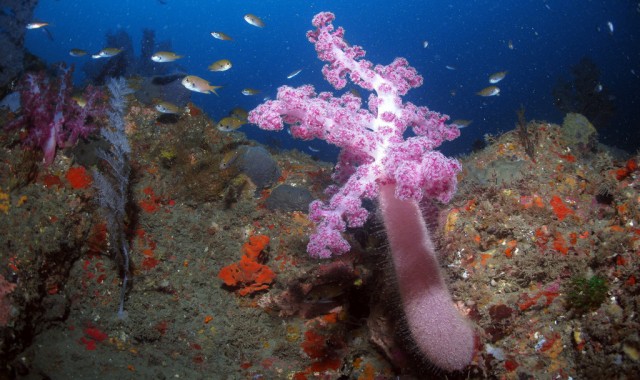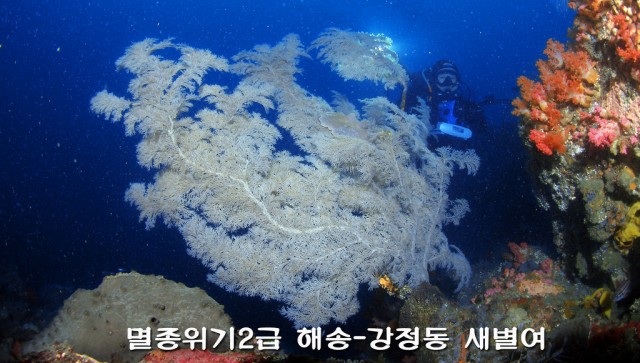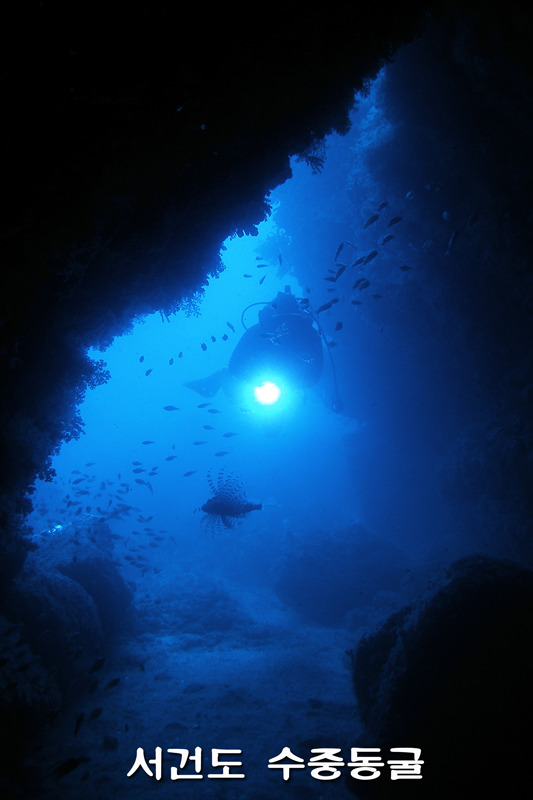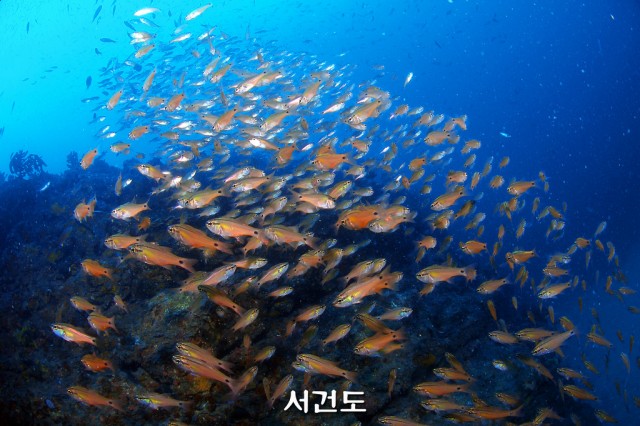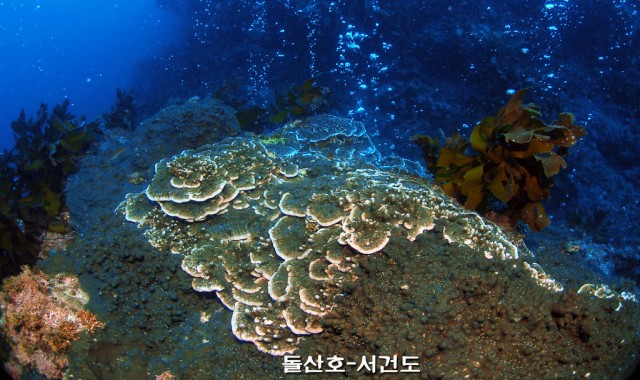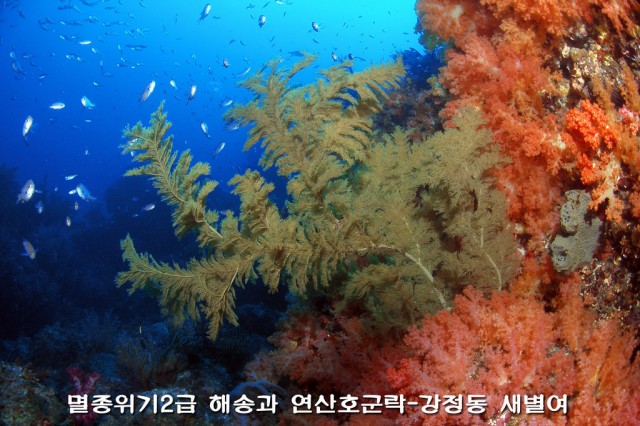…I can state unequivocally, based on my personal observations and a review of pertinent scientific literature, that Jeju’s octocoral assemblages are unique, spectacular, and worthy of special protection. They form the largest and most spectacular temperate Octocoral forests known on Earth. Particularly convincing are Dr. Jun-Im Song’s prolific and exhaustive reports on their taxonomy, reproduction and distribution, replete with numerous photographs and detailed topographical maps. My recent communications to discuss the flourishing Guangjeong octocorals with scientists and underwater photographers, working in Australia, the Red Sea, Taiwan, Micronesia, Japan and Indonesia, all serve to confirm my words.
So peculiar and surprisingly beautiful are Jeju’s Octocoral forests that they were designated as Korean Natural Monument #442 and a UNESCO Biosphere Reserve. They feature high coral coverage on a substrate of ancient Andesite lava, and depend on the warm and rich Tsushima Current, a branch of the Kuroshio, to form diverse habitats from 5 to 60m deep. Unlike tropical coral reefs, Jeju’s temperate octocoral assemblages are unusual in being dominated by species without zooxanthellae (symbiotic algae) in their tissues. Lacking these algae to provide them nutrients, they must capture food with their typical, eight (hence, “octo”-corals) feathery tentacles around the mouths of each flower-like polyp animal forming a coral colony. They are sessile suspension-feeders, meaning that each coral is fixed in one position for its lifetime, and its polyps capture food (plankton and dissolved organic matter) as it passes by in the ocean currents. Their presence is quintessential as habitat for other marine life, including other invertebrates and fishes, very much like trees in a forest provide home for other creatures…
– Katherine Muzik, Ph.D.
More about Gangjeong’s coral here and here.
Filters: Photos



